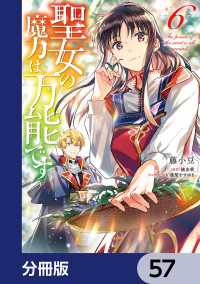Description
The most comprehensive and practical guide to understanding and applying the science of reading to improve literacy instruction.
After effectively teaching phonics in the early grades, what does the science of reading tell us should happen in literacy classes? The Teach Like a Champion Guide to the Science of Reading by Doug Lemov, Erica Woolway, and Colleen Driggs, addresses the pressing challenges educators face in effectively incorporating the Science of Reading into their instruction once students already know how to decode. By offering actionable guidance grounded in seven evidence-based principles, this book helps teachers elevate their instructional practices and better prepare students to be lifelong readers and thinkers.
Grounded in proven classroom instruction, the book focuses on techniques that can allow teachers to use the science as effectively and actionably as possible. The Teach Like a Champion Guide to the Science of Reading is enhanced with more than 50 video clips from the classroom and covers ways to practically apply the Science of Reading. The book describes the often overlooked role of fluency in reading comprehension, even into the high school years; the profound importance of managing and socializing attention in an age of technology; the central role of background knowledge in understanding text; and the doubly important role of teaching vocabulary as a form of knowledge. It adds a discussion of how writing can make students better readers and how important it is that reading classes focus on reading actual books—great ones, ideally. And it closes with a discussion of close reading and the challenge of preparing students to rise to the challenge of complex text.
Inside the book:
- An innovative approach to building and reinforcing background knowledge in reading
- Over 50 video demonstrations of effective teaching techniques
- Sample lesson plans and materials for immediate classroom application
The Teach Like a Champion Guide to the Science of Reading is essential for educators, literacy coaches, and administrators who aim to foster rigorous literacy instruction in their classrooms and schools. This guide shows you how to implement techniques that ensure students find joy in reading and become better, wiser, more engaged and more motivated readers, both in their classrooms and in their lives beyond.
Table of Contents
About the Authors ix
Acknowledgments xi
How to Use This Book xiii
Introduction: “The Science of Reading”: Shockwaves from a Podcast xvii
1 The Science of Reading in Seven Key Arguments 1
A Broad Base of Research 3
Seven Key Research- Backed Arguments About “Post- Phonics” Reading 4
“The Single Most Important Thing for Teachers to Know” 31
But Will Students Dislike It? 38
Notes 41
2 Attending to Attention 47
The Book Is Dying 49
We Wire How We Fire 55
Intentional Ways of Reading for Attention and Connection 61
High Text, Low Tech 71
Book- Driven Objectives 76
Principles of Reading in Action 79
Chapter Recap 82
Notes 82
3 Fluency and Ways of Reading 87
Orthographic Mapping 92
Balancing Three Ways of Reading 95
Teacher Read Aloud 97
Fase Reading 109
Accountable Independent Reading (AIR) 126
Chapter Recap 134
Notes 135
4 The Hidden Power of Background Knowledge 137
Research on Knowledge 139
We Know Knowledge Matters– Why Don’t We Act That Way? 141
Performance on the New York State ELA End- of- Year State Test Grades 3–8 (2022–2023) 149
Embedded Nonfiction 151
Embellishments and Knowledge Feeding 163
Knowledge Organizers 168
Retrieval Practice 172
The Forgetting Curve 175
The Recursiveness of Knowledge: Putting It All Together 179
Chapter Recap 182
Notes 182
5 Vocabulary Reconsidered 185
Explicit Vocabulary Instruction 194
Implicit Vocabulary Instruction 205
The Vocabulary Case for Reading Aloud (and FASE) 210
Lesson Preparation 213
Recursiveness of Vocabulary 217
Chapter Recap 219
Notes 219
6 Using Writing to Develop Readers 221
“Write Down Some Ideas First” 225
Writing for Reading: Principles of Writing to Build Literacy 231
Putting It All Together 271
Chapter Recap 273
Notes 274
7 The Power of the Book 277
Why Have All the Books Gone? 282
Stories are Cognitively Privileged 285
The Medium Is the Message 290
Books Provide Valuable Cultural Capital 291
All Books Are Equal, But Some Books Are More Equal Than Others 294
Getting Them to Read 299
Chapter Recap 302
Notes 304
8 Close Reading 307
Jen Brimming’s Close Reading of Lord of the Flies 309
Short Bursts and Opportunities to Encode 319
Selecting Complex Texts for Close Reading 322
Selecting Textual Excerpts 325
The Critical Importance of Establishing Meaning 328
Attentionally Privileged Environments 335
More Examples of Effective Close Reading Questions 338
Knowledge, Disambiguation, and Close Reading 348
Close Reading in the Context of a Lesson 350
Chapter Recap 359
Notes 360
Appendix A: Full Sample Lesson, Seventh Grade 363
Appendix B: Full Sample Lesson, Ninth Grade 375
Appendix C: Decoding Tips 393
Appendix D: Reading Reconsidered Curriculum: The Giver Fluency Practice: Sample Materials 397
Appendix E: Materials for Knowledge Building: Embedded Texts 403
Index 419
-

- 電子書籍
- 当て馬だけにはなりたくない!(1) F…
-

- 電子書籍
- 極悪令嬢~令嬢に転生した最強老兵はスキ…
-

- 電子書籍
- レベルドレイン -絶対無双の冒険者-【…
-

- 電子書籍
- 聖女の魔力は万能です【分冊版】 57 …




